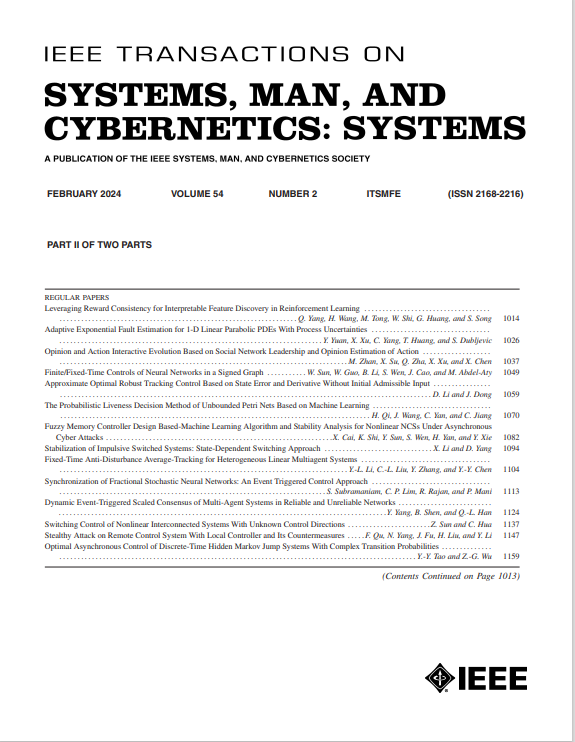基于高斯核的柔性关节柔顺控制
IF 8.6
1区 计算机科学
Q1 AUTOMATION & CONTROL SYSTEMS
IEEE Transactions on Systems Man Cybernetics-Systems
Pub Date : 2025-03-25
DOI:10.1109/TSMC.2025.3548306
引用次数: 0
摘要
在人机交互过程中,如何在保证强冲击稳定性的同时提高阻抗绘制的精度,仍然是一个挑战。在这项工作中,我们的目标是在具有规定性能函数(PPF)的导纳控制方案下为柔性关节提供所需的阻抗。特别地,引入高斯核作为PPF的松弛项,使控制在存在突变外力矩的情况下仍能保持稳定性。同时,当这些力矩不存在时,产生的误差包络线更窄,这也提高了所需阻抗模型的保真度。为了使内位置环达到预定的跟踪性能,通过定义由二阶动态面桥接的两个一阶复合误差面,提出了一种两级反步控制。这揭示了可用状态反馈下的最小回溯阶段数,从而避免了“条款爆炸”。此外,将双自适应神经网络引入反演控制,对匹配和不匹配的扰动进行补偿。通过实时实验验证了该方法的有效性。本文章由计算机程序翻译,如有差异,请以英文原文为准。
Compliant Control of Flexible Joint Toward Prescribed Performance With Gaussian Kernels
It remains a challenge to improve the accuracy of impedance rendering while ensuring stability under strong impacts during human-robot interaction. In this work, we aim to render the desired impedance for the flexible joint under an admittance control scheme with prescribed performance function (PPF). Specially, Gaussian kernels are introduced as the slack terms for PPF, so that the control stability can be maintained in the presence of abrupt external torques. Meanwhile, a narrower error envelope is yielded when such torques are absent, which also improves the fidelity of the desired impedance model. To achieve the prescribed tracking performance of the inner position loop, a two-stage backstepping control is proposed by defining two first-order composite error surfaces bridged by a second-order dynamic surface. This promulgates the minimum number of backstepping stages under the available state feedback, thus avoiding “explosion of terms.” In addition, dual-adaptive neural networks are incorporated into the backstepping control to compensate for the matched and unmatched disturbances. Real-time experiments are conducted to validate the appeal of the proposed method.
求助全文
通过发布文献求助,成功后即可免费获取论文全文。
去求助
来源期刊

IEEE Transactions on Systems Man Cybernetics-Systems
AUTOMATION & CONTROL SYSTEMS-COMPUTER SCIENCE, CYBERNETICS
CiteScore
18.50
自引率
11.50%
发文量
812
审稿时长
6 months
期刊介绍:
The IEEE Transactions on Systems, Man, and Cybernetics: Systems encompasses the fields of systems engineering, covering issue formulation, analysis, and modeling throughout the systems engineering lifecycle phases. It addresses decision-making, issue interpretation, systems management, processes, and various methods such as optimization, modeling, and simulation in the development and deployment of large systems.
 求助内容:
求助内容: 应助结果提醒方式:
应助结果提醒方式:


